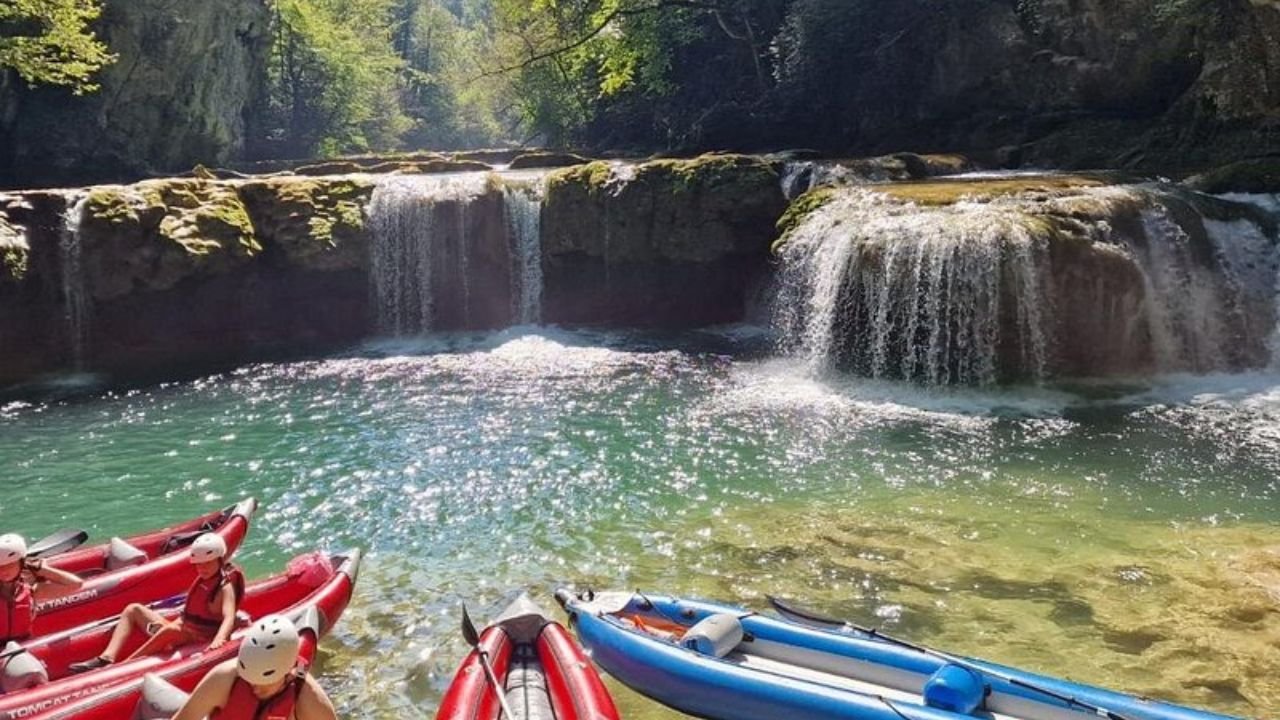Nestled in the heart of Croatia’s rugged karst landscape, Plitvice Lakes National Park is a breathtaking mosaic of turquoise lakes, cascading waterfalls, and lush forests. As Croatia’s oldest and largest national park, established in 1949 and designated a UNESCO World Heritage Site in 1979, it attracts over a million visitors annually for its unparalleled natural beauty. This 2000-word guide equips you with everything you need to plan a perfect nature retreat, from logistics and trails to cultural insights and sustainable practices.
Why Visit Plitvice Lakes National Park?
Plitvice Lakes National Park spans nearly 300 square kilometers, with 16 terraced lakes interconnected by over 90 waterfalls. The lakes, formed by natural travertine barriers, shift in hue from emerald to azure depending on sunlight and mineral content, creating a surreal landscape. Wooden boardwalks and scenic trails weave through dense forests, home to diverse wildlife like deer, bears, and rare birds. Whether you’re a hiker, photographer, or nature enthusiast, Plitvice offers an immersive escape into one of Europe’s most pristine ecosystems.
Getting to Plitvice Lakes National Park
Location and Accessibility
Plitvice lies in central Croatia, roughly 130 km south of Zagreb and 140 km northeast of Zadar, making it an accessible day trip or overnight adventure from major coastal cities like Split or Dubrovnik. The park is situated along the D1 highway, a well-maintained route connecting northern and southern Croatia.
Transportation Options
- By Car: Renting a car offers the most flexibility. From Zagreb, the drive takes about 2 hours via the A1 and D1 highways (tolls ~€5). From Zadar, it’s a 2-hour drive along the D522. Parking is available at both main entrances (€1.50/hour, capped at €10/day). Book rentals early in peak seasons (June-August) to secure better rates (~€30-50/day).
- By Bus: Regular buses run from Zagreb’s main terminal to Plitvice (2.5 hours, €12-15 one-way) and Zadar (2 hours, €10-12). Services also connect from Split (4 hours, €20-25) and Dubrovnik (6 hours, €30-35). Buses stop at Entrance 1 or 2, with schedules available on sites like GetByBus. Book in advance for summer travel.
- By Tour: Guided day tours from Zagreb, Zadar, or Split (~€80-120) include transport, tickets, and a guide. These are ideal for those short on time but may feel rushed compared to self-guided visits.
Best Time to Visit
- Spring (April-May): Mild temperatures (10-20°C), blooming flora, and moderate crowds make spring ideal. Waterfalls are at their peak due to snowmelt.
- Autumn (September-October): Cooler weather (8-18°C) and vibrant foliage create stunning vistas. Fewer visitors ensure a quieter experience.
- Summer (June-August): Warm (20-30°C) but crowded, with long ticket lines. Early morning visits are essential to beat the rush.
- Winter (November-March): Snow transforms Plitvice into a magical wonderland, but some trails close, and temperatures can drop below 0°C. Tickets are cheaper, and crowds are minimal.
For real-time weather updates, check X posts from recent visitors or the park’s official website (np-plitvicka-jezera.hr).
Park Essentials
Entrances and Tickets
Plitvice has two main entrances:
- Entrance 1: Near the Lower Lakes and Veliki Slap (Croatia’s tallest waterfall at 78m). It’s closer to parking, hotels, and restaurants.
- Entrance 2: Accesses the Upper Lakes and is less crowded early in the day.
Ticket Prices (2025, subject to change):
- Peak Season (June-September): €40/adult, €15/child (7-18), free for under 7.
- Shoulder Season (April-May, October): €25/adult, €10/child.
- Off-Season (November-March): €10/adult, €5/child. Tickets include electric boat rides across Kozjak Lake and shuttle bus transfers between Upper and Lower Lakes. Purchase online up to 48 hours in advance to skip queues, especially in summer. One-day tickets cover all trails, but re-entry requires a new ticket.
Operating Hours
The park typically opens at 7 AM and closes at 8 PM, with slight variations by season. Boats and shuttles operate from 8 AM to 6 PM. Confirm hours on the official website before your visit.
How Long to Spend
A full day (6-8 hours) is ideal to explore both Upper and Lower Lakes at a leisurely pace. Half-day visits (3-4 hours) suit shorter routes but may feel rushed. Overnight stays allow for early morning or late afternoon visits when the park is quieter.
Exploring the Park
Trails and Programs
Plitvice offers seven marked trails (Programs A to K), ranging from 2 to 8 hours and 3.5 to 18 km. Trails combine boardwalks, gravel paths, and boat/shuttle rides, with clear signage in English and Croatian. Here are the most popular options:
- Program A (2-3 hours, 3.5 km): Starts at Entrance 1, focuses on the Lower Lakes, and includes Veliki Slap and Supljara Cave. Ideal for families or those with limited time.
- Program C (4-6 hours, 8 km): Starts at Entrance 1 or 2, covers both Upper and Lower Lakes, and includes a boat ride across Kozjak Lake. Highlights include Veliki Slap, Milanovac Lake, and the Upper Lakes’ cascading falls. This is the most popular route for first-timers.
- Program H (6-8 hours, 18 km): A comprehensive loop from Entrance 2, covering nearly all lakes and waterfalls. Best for avid hikers, it includes remote viewpoints and quieter trails.
- Program K (8 hours, 18 km): A hiking-only route (no boat/shuttle), circling the entire park. It’s physically demanding but offers an immersive experience of Plitvice’s forests and lakes.
Download the park’s mobile app or grab a free map at the entrance for trail details. All routes are well-maintained, but boardwalks can be slippery after rain.
Must-See Highlights
- Veliki Slap: The park’s tallest waterfall, a dramatic 78m cascade best viewed from the Lower Lakes trails.
- Kozjak Lake: The largest lake, spanning 2 km, with crystal-clear waters and a serene boat ride.
- Supljara Cave: A limestone cave near Veliki Slap, offering cool respite and unique rock formations.
- Galovac Lake: A series of terraced pools in the Upper Lakes, surrounded by smaller waterfalls.
- Gradinsko Lake: Known for its vibrant turquoise hue and tranquil setting.
Hiking Tips
- Footwear: Wear sturdy, waterproof hiking shoes or boots. Boardwalks are uneven and often wet.
- Navigation: Trails are clearly marked, but carry a map or use the park app to track your route.
- Rules: Stay on designated paths to protect the fragile ecosystem. Swimming, fishing, and drone use are prohibited.
- Fitness: Most trails involve stairs and gentle inclines. Programs A-C are suitable for all fitness levels; H and K require moderate endurance.
Practical Tips for Your Visit
Accommodation
Staying near the park enhances your experience, allowing early or late visits to avoid crowds. Options include:
- Park Hotels: Hotel Jezero and Hotel Plitvice near Entrance 2 offer modern amenities (~€100-150/night). Book 3-6 months ahead for summer.
- Guesthouses: Charming stays in villages like Rastovača, Mukinje, or Jezerce (~€40-80/night). Many offer breakfast and local hospitality.
- Camping: Korana Camping near Entrance 1 has bungalows and tent sites (~€20-50/night). Ideal for budget travelers.
- Airbnb: Private apartments in nearby towns like Slunj or Korenica (~€50-100/night) provide a homey feel.
Book early for spring and autumn; winter offers more availability but fewer open properties.
Food and Dining
- On-Site: Lička Kuća near Entrance 1 serves traditional Croatian dishes like roasted lamb, trout, or štrukli (cheese-filled dumplings, €15-20). Buffet Poljana near Entrance 2 offers quick meals (~€10). Kiosks sell snacks, water, and coffee.
- Packing a Lunch: Bring a picnic to enjoy at designated rest areas (e.g., near Kozjak Lake). Pack reusable containers to minimize waste.
- Nearby: Restaurants in Mukinje or Rastovača, like Restoran Degenija, offer hearty local fare (~€12-18).
What to Bring
- Clothing: Layered clothing for variable weather, a raincoat, and a hat for sun protection.
- Essentials: Reusable water bottle (refill stations available), sunscreen, insect repellent, and a small backpack.
- Photography: A camera or smartphone for the park’s vibrant colors. Tripods are allowed but must not obstruct paths.
- Cash: Some kiosks and local vendors don’t accept cards. Carry kuna (HRK) or euros (€1 ≈ 7.5 HRK).
Accessibility
- Mobility: The area near Entrance 1 (Lower Lakes) has wheelchair-friendly boardwalks, but most trails involve stairs. Electric shuttles and boats are accessible with assistance.
- Families: Strollers are manageable on Programs A and B but challenging on longer routes. Rest areas have benches and diaper-changing facilities.
- Seniors: Opt for shorter routes (A or C) and use shuttles to reduce walking.
Extra Experiences
Photography
Plitvice’s ethereal landscapes are a photographer’s dream. For the best shots:
- Visit at dawn for soft light and mist over the lakes.
- Use a polarizing filter to enhance water clarity.
- Focus on Veliki Slap, Kozjak Lake, and the Upper Lakes’ terraced falls.
- Avoid peak hours (10 AM-3 PM) for crowd-free frames.
Nearby Attractions
- Rastoke Village (30 minutes away): A picturesque “Little Plitvice” with watermills and stone houses along the Korana River (€5 entry).
- Barać Caves (20 minutes): Guided tours of underground limestone caves (€10/adult).
- Slunj: A quaint town (25 minutes) with local markets and cafes.
Wildlife and Nature
Plitvice’s forests host brown bears, lynx, and over 160 bird species, including the white-throated dipper. Spot deer or foxes at dawn or dusk. Guided eco-tours (~€50) offer insights into the park’s flora and fauna. Always maintain a safe distance from wildlife.
Cultural and Historical Context
Plitvice is more than a natural wonder; it’s steeped in Croatian heritage. The region’s karst geology, shaped over millennia, inspired local legends of fairies and spirits guarding the lakes. The park’s name derives from “plitak” (shallow), reflecting the lakes’ travertine formations. During the Yugoslav Wars (1991-1995), Plitvice was a conflict zone, but restoration efforts have preserved its pristine state. Visiting supports local communities reliant on tourism.
Sustainable Travel Practices
Plitvice’s ecosystem is fragile, and over-tourism poses a threat. To minimize your impact:
- Stick to marked trails to avoid damaging travertine barriers.
- Use reusable water bottles and avoid single-use plastics.
- Respect wildlife by keeping noise low and not feeding animals.
- Choose eco-friendly accommodations, like guesthouses with sustainable practices.
- Offset your carbon footprint by supporting local conservation initiatives (e.g., donations via the park’s website).
Safety and Regulations
- Weather: Check forecasts; sudden rain can make boardwalks slippery. Thunderstorms may close trails.
- Health: Carry a basic first-aid kit. The nearest hospital is in Ogulin (45 minutes).
- Rules: No smoking, littering, or picking plants. Pets are allowed on leashes but not on boats.
- Emergencies: Park rangers are stationed at key points. Emergency numbers are posted at entrances (112 for EU-wide assistance).
Budgeting Your Trip
- Day Trip: €50-80/person (ticket, transport, food).
- Overnight: €100-150/person (accommodation, meals, ticket).
- Tours: €80-120 for guided day trips; private tours ~€200.
- Extras: Souvenirs (e.g., local honey or handmade crafts, €5-20) and nearby attractions (€5-10).
Final Tips and Resources
- Plan Ahead: Book tickets, accommodation, and transport 1-3 months in advance for peak seasons.
- Stay Connected: Wi-Fi is limited; download offline maps (e.g., Maps.me) and the park app.
- Check X: Search for recent visitor posts on X for real-time tips, crowd updates, or trail conditions.
- Learn Basic Croatian: Phrases like “Hvala” (thank you) or “Dobar dan” (good day) enhance interactions with locals.
Plitvice Lakes National Park is a testament to nature’s artistry, offering serenity and adventure in equal measure. With this guide, you’re ready to craft a retreat that balances exploration, relaxation, and respect for this Croatian gem. Enjoy your journey into Plitvice’s turquoise paradise!

